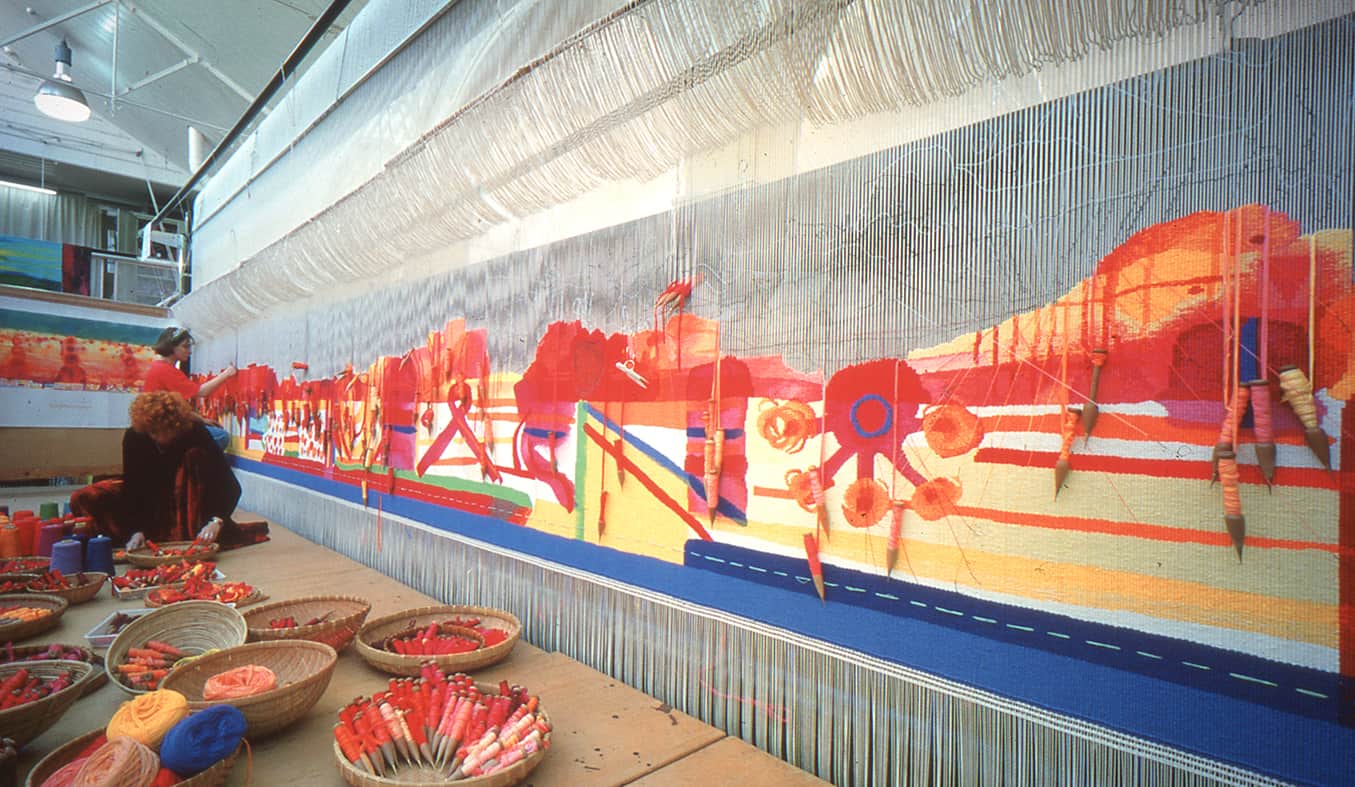
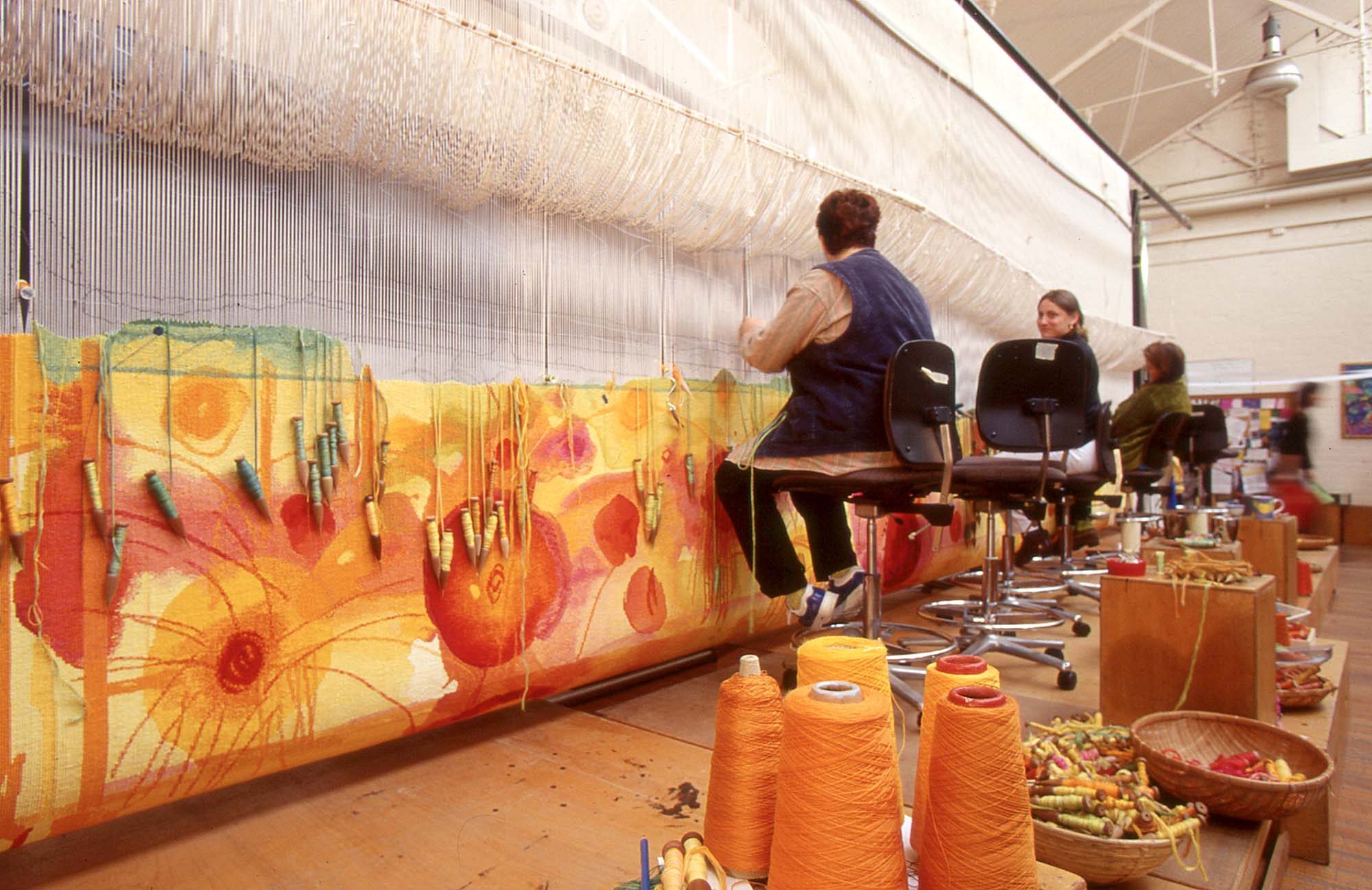
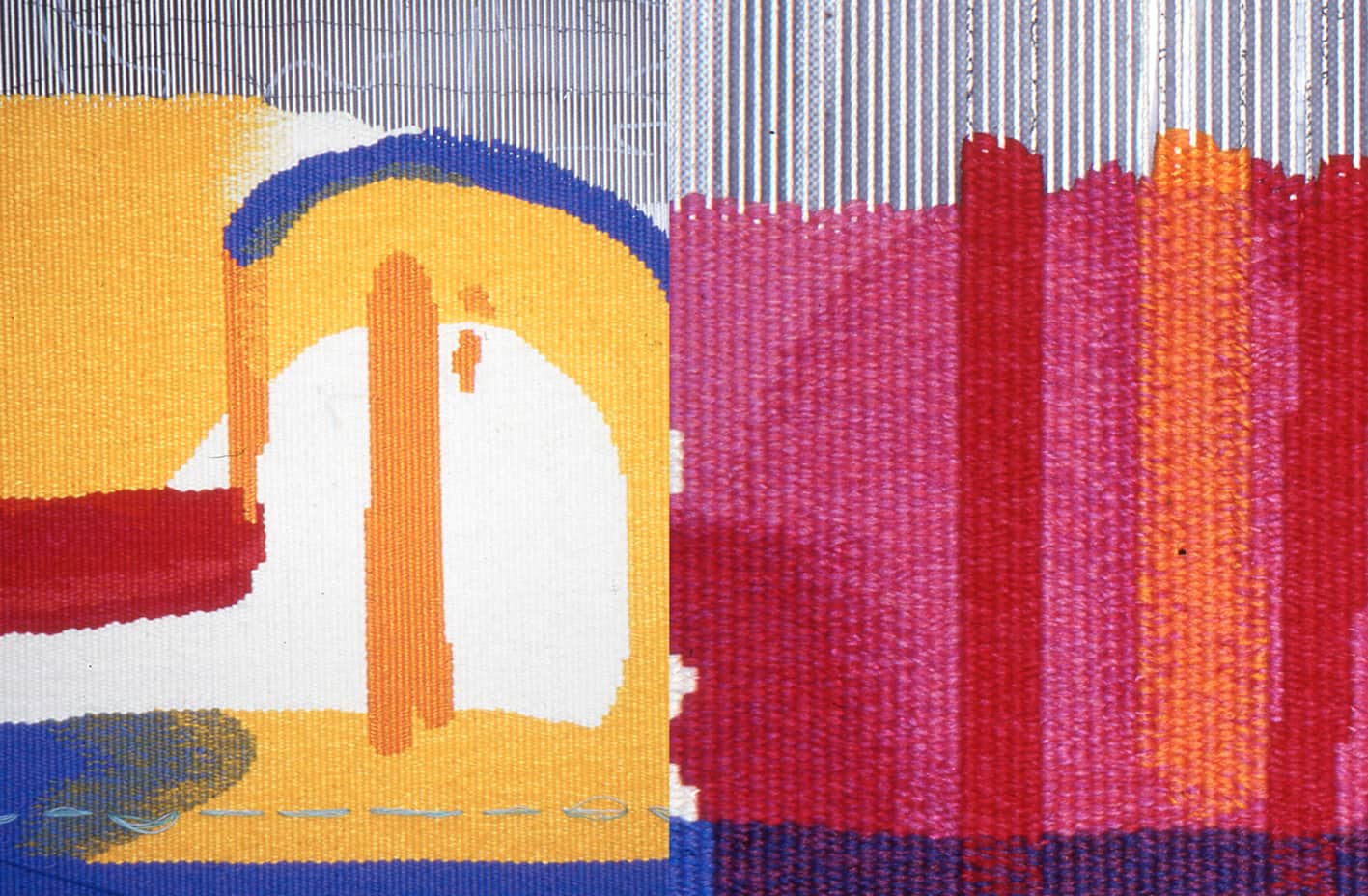
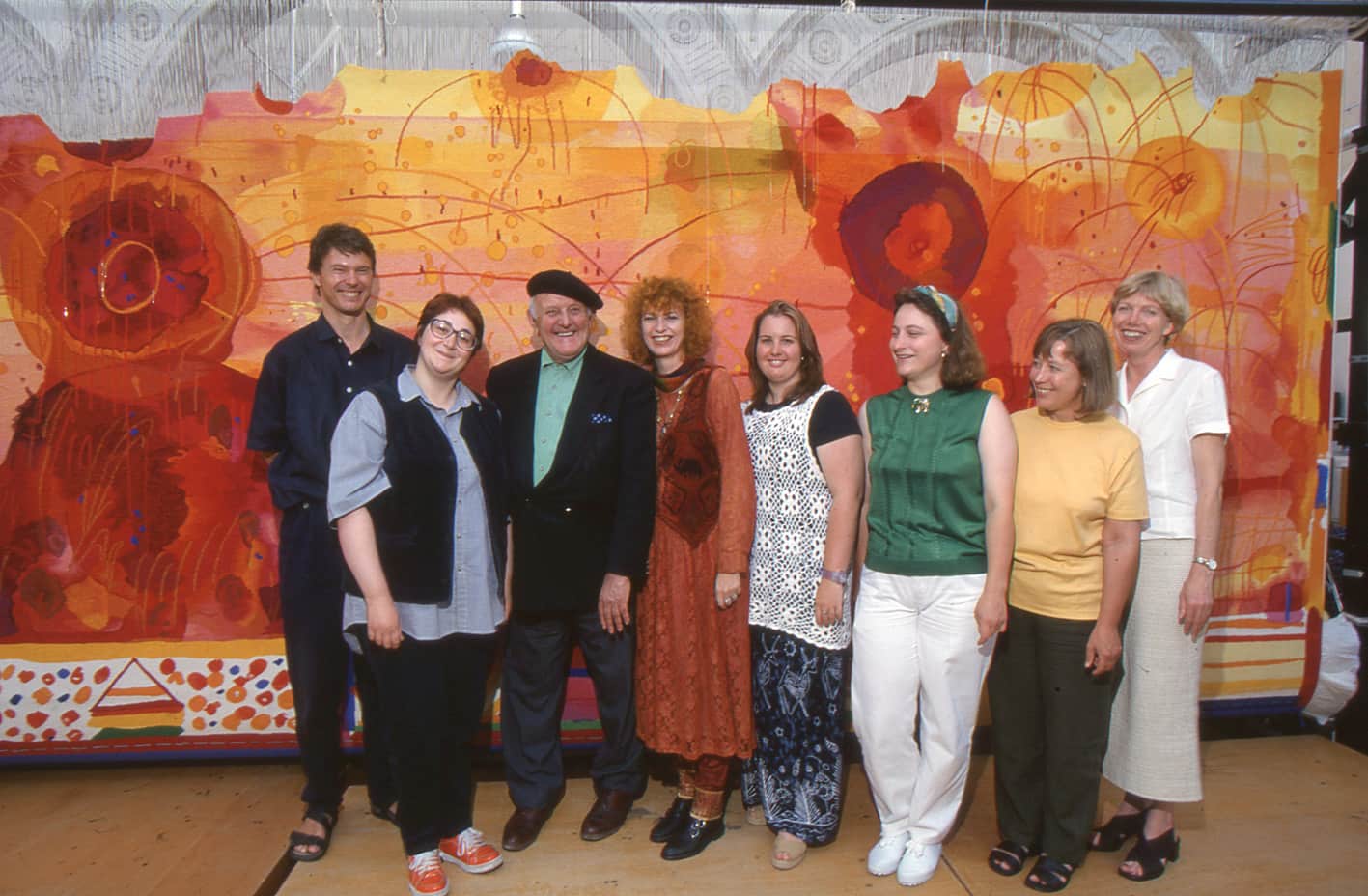
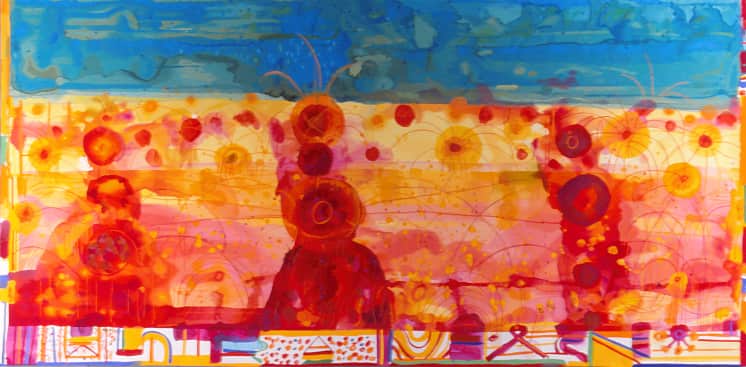

Rising suns over Australia Felix was the first of several tapestries designed by John Olsen AO OBE and woven by the ATW in 1997.
After working with tapestry workshops in France and Portugal in the 1960s, Olsen found the work of ATW weavers to be world-class and has been a steadfast supporter of the ATW ever since. Olsen is widely considered to be one of Australia’s most important living artists. He is known for his lyrical drawings and paintings that feature native Australian flora and fauna. His works are constructed with multiple meandering lines, energetic life-forms and the rich colours that make up the Australian landscape.
Rising suns over Australia Felix, commissioned by the Department of Foreign Affairs and Trade, was inspired on a return flight to Australia, at the exact moment when Olsen witnessed a sunrise and saw the ascending orb gradually illuminate the expansive land below. The scene is split into two distinct halves – sky and land – but in both realms the surface is dappled, suggesting the luminosity of the dawn scene. The monumental scale of the tapestry effectively conjures the vastness of the Australian continent.
Olsen’s work is housed in Olsen Gallery and has been collected widely by national and international institutions.
In 1996 Wamungku- My Mother’s Country, designed by Ginger Riley Munduwalawala, was translated into tapestry. Munduwalawala (c1937-2002) was a member of the Mara Community from the Gulf country in Arnhem Land in the Northern Territory.
For many years Munduwalawala worked as a stockman on Nutwood Downs Station and, while travelling, met the well-known Indigenous artist Albert Namatjira, an encounter that was to influence his artistic development.
Munduwalawala’s large-scale tapestry Wamungku, My Mother’s Country was commissioned by the Department of Foreign Affairs and Trade in Canberra. The image is replete with references to Munduwalawala’s ancestral land on the Limmen Bight River in the Gulf country. The scene depicts a red sky and the symbolically important Four Archers, which represent hill formations in the Limmen Bight landscape, relating to stories of the creation myth. The image also includes animal totems such as kangaroos, snakes and sea eagles. One of the totems depicted repeatedly across the image –the white-breasted sea eagle – was the subject of an earlier, smaller tapestry woven by the Workshop. The sea eagle, known as Ngak Ngak in Munduwalawala’s native language, often appeared in his paintings as an emblem of vigilance, a totem keeping protective watch over his beloved homeland.